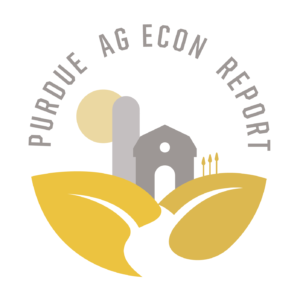Does a higher standard deduction decrease cash donations and volunteering?
October 24, 2024
PAER-2024-26
Author: Laura Montenovo, Assistant Professor in the Department of Agricultural Economics
Report by Laura Montenovo – based on research with Professor Bradley Heim
Tax policy shapes individuals’ incentives to give to charities. In fact, taxpayers can deduct charitable cash contributions as an itemized deduction, which decreases their taxable income and leads to a lower tax bill. Itemizing deductions, however, is not convenient for all taxpayers. Moreover, the standard deduction is the better option for those whose total itemized deductions for eligible expenses are lower than the current standard deduction. Taxpayers choose between the standard deduction and itemized deductions based on which yields the lower amount of taxable income and, hence, tax liability.
By changing the standard deduction amount, policymakers change the taxpayers’ incentives to itemize deductions and, in turn, also affect their tax-related advantages of donating to charity. For example, increasing the standard deduction will discourage some taxpayers from itemizing taxes instead of using the standard deduction, thereby decreasing their tax incentive to donate cash to non-profit organizations.
We explore the effects of changing the tax benefits of donating to charity on taxpayers’ volunteering behavior. Estimating how individuals’ volunteering behavior responds to tax reforms that alter their incentives to donate money allows policymakers to fully evaluate the impacts on the nonprofit sector.
If cash and time donations moved in the same direction, then policies that increase the incentives to donate to charity, also increase the incentives to volunteer. Similarly, tax reforms that decrease the incentives for charity donations double down the adverse effects on nonprofits through less volunteering. However, it is also possible that taxpayers make up their lower cash donations with increased volunteering.
For example, by substantially increasing the standard deduction, the Tax Cuts and Jobs Act (TCJA) (2017) decreased the incentives to donate money. Did public charities lose both money and time donations as a result, or did their constituents react to the law by volunteering more?
We tackle this research question using data from the PSID (Panel Study of Income Dynamics) and focus on the period between 2001 and 2019, spanning recent tax reforms that affected the after-tax price of giving. We use such policy variation to estimate the effect on individuals’ probability and amount of volunteering. Because the PSID contains data on the same individual over time, we can better identify the relationship between the tax price of money and volunteering and provide more accurate predictions. The results of prior literature on this topic suggest that when tax reforms decrease the incentives to donate money, individuals respond by volunteering less. However, in previous work, researchers used one year of data or cross-sectional data, which has several limitations.
After addressing some of these limitations, our estimates indicate that when the tax advantage to donate to charity is weaker, people are, in fact, also less likely to volunteer. However, this relationship, when present, is modest. Specifically, we found that donating money and the probability of volunteering (i.e., deciding whether to volunteer or not) move in the same direction. A $0.01 increase in the tax price of money, decreasing the willingness to donate cash to charity, reduces the probability of volunteering by 0.4%. Importantly, we do not find any statistically significant relationship between the tax price of cash donations and the hours (i.e., amount) of volunteering. Hence, tax reforms that change the tax price of donating money slightly affect the donors’ decision to volunteer but not the total hours they spend volunteering.
We get a better sense of these estimates if we apply them to one of the most substantial recent changes to the tax price, that TCJA. The federal government passed the TCJA in 2017, which increased the average tax price from 0.925 to 0.981 between 2016 and 2018, a 5.6 percentage point increase. Based on this average increase in the tax price, our coefficients suggest that the TCJA decreased the fraction of individuals who volunteer by less than two percent and did not change the number of hours volunteered.
Our research quantifies the consequences on non-profit organizations of tax reforms that change the tax price of volunteering by varying the standard deduction amount, affecting the incentives to itemize deductions. Our results imply that tax reforms that decrease the incentives to give money to charity also decrease the probability of volunteering, leading to a double negative effect on non-profit organizations. However, this effect is modest in size. Further, we did not find a statistically significant relationship between such reforms and the time spent volunteering. Overall, the results suggest that tax reforms impacting cash donation choices among taxpayers might also alter their decision to volunteer in the same direction, but slightly.
